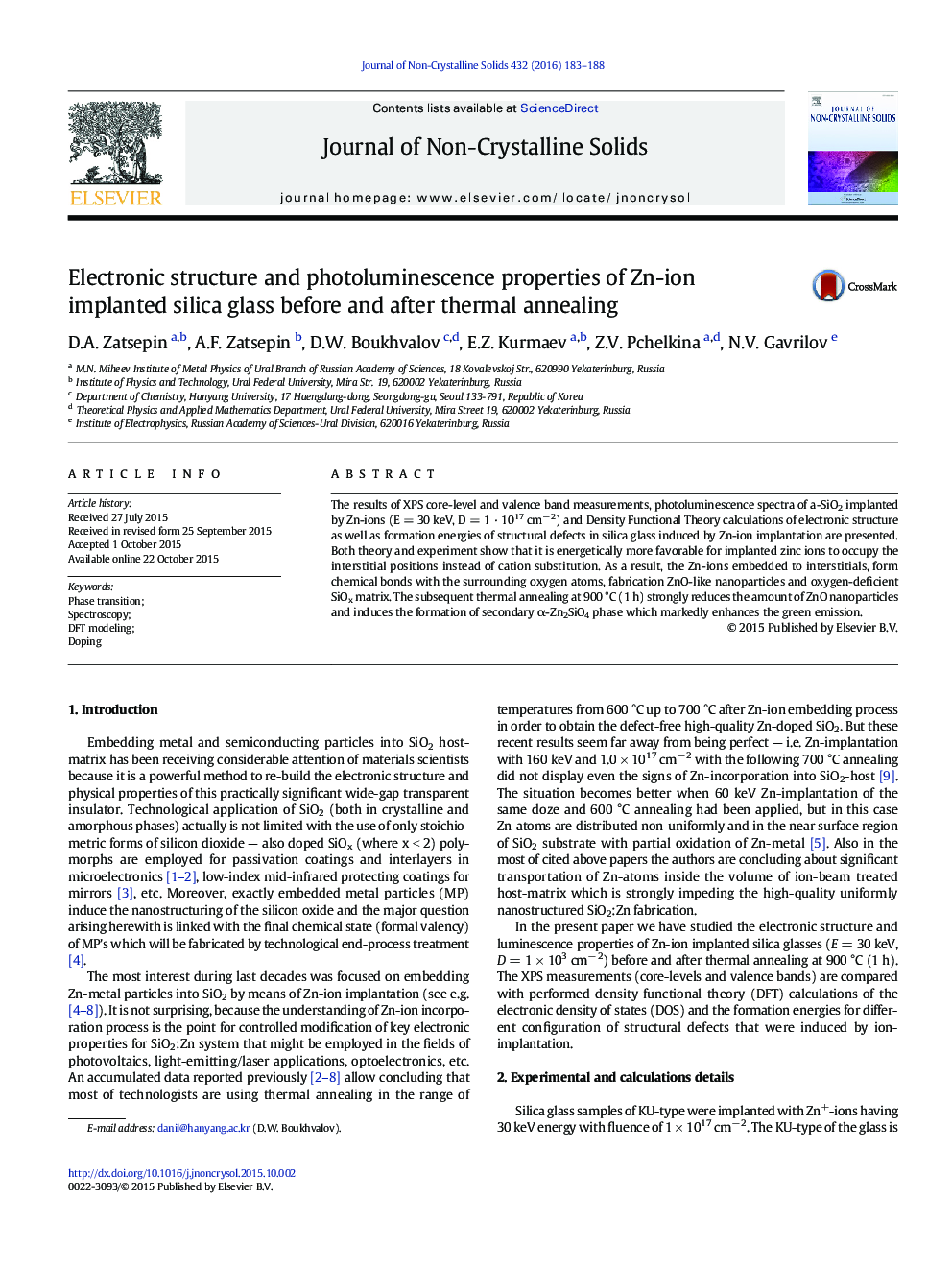| Article ID | Journal | Published Year | Pages | File Type |
|---|---|---|---|---|
| 1480402 | Journal of Non-Crystalline Solids | 2016 | 6 Pages |
•Amorphous SiO2 matrix was doped by Zn-ion with further annealing.•Measurements and calculations demonstrate formation of ZnO nanoclusters after ion implantations.•Further annealing provides formation of secondary Zn2SiO4 phase.•Formation of secondary phase also discussed in theory and confirmed in optics measurements.
The results of XPS core-level and valence band measurements, photoluminescence spectra of a-SiO2 implanted by Zn-ions (E = 30 keV, D = 1 · 1017 cm− 2) and Density Functional Theory calculations of electronic structure as well as formation energies of structural defects in silica glass induced by Zn-ion implantation are presented. Both theory and experiment show that it is energetically more favorable for implanted zinc ions to occupy the interstitial positions instead of cation substitution. As a result, the Zn-ions embedded to interstitials, form chemical bonds with the surrounding oxygen atoms, fabrication ZnO-like nanoparticles and oxygen-deficient SiOx matrix. The subsequent thermal annealing at 900 °C (1 h) strongly reduces the amount of ZnO nanoparticles and induces the formation of secondary α-Zn2SiO4 phase which markedly enhances the green emission.
